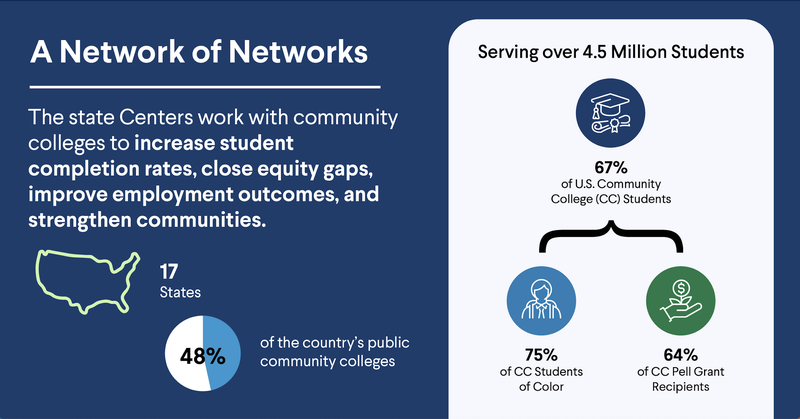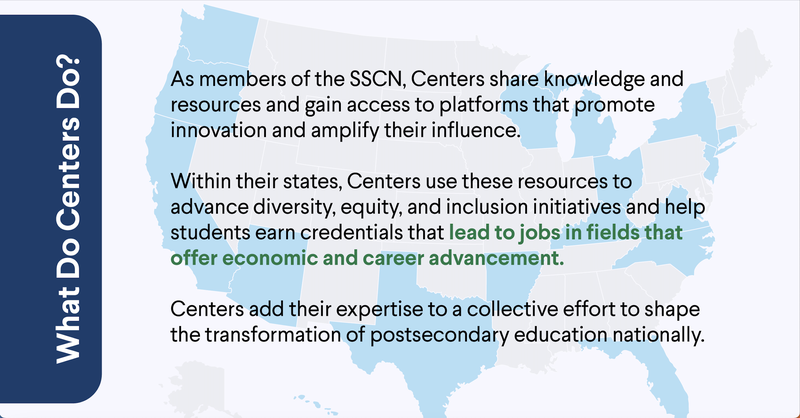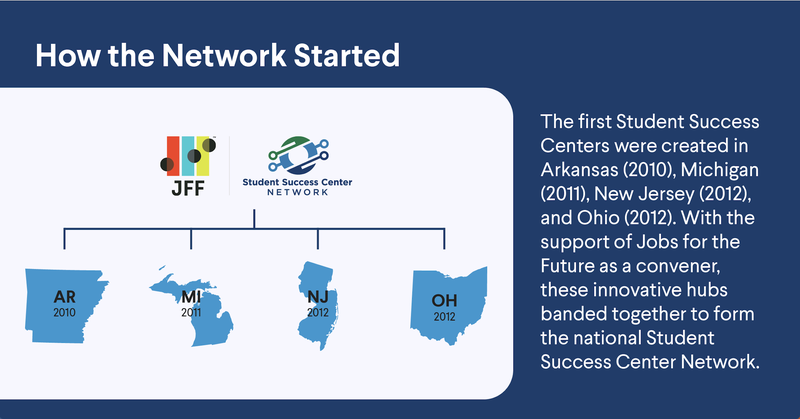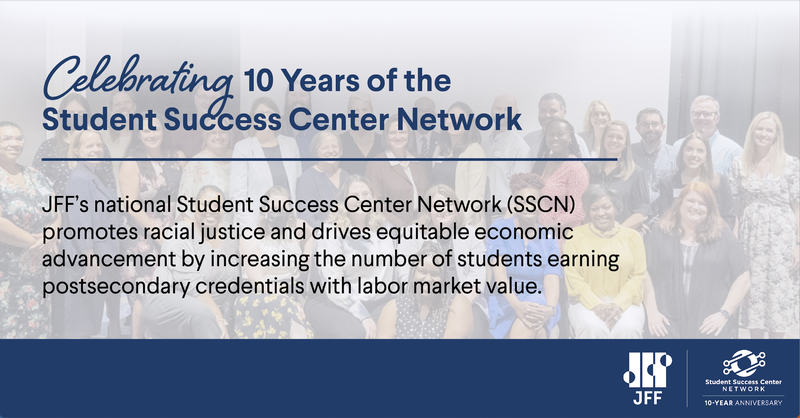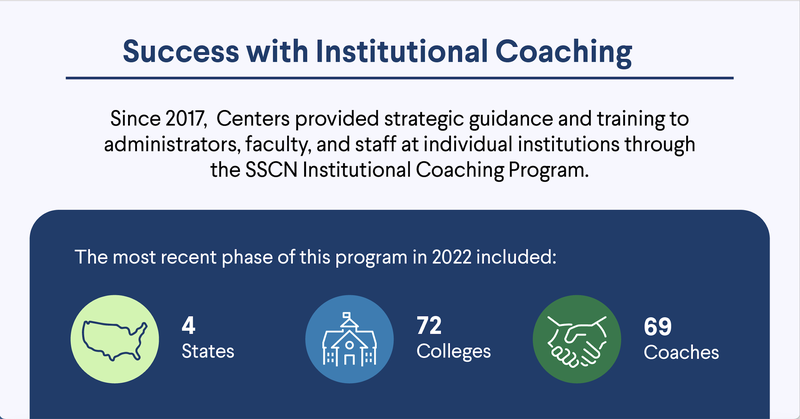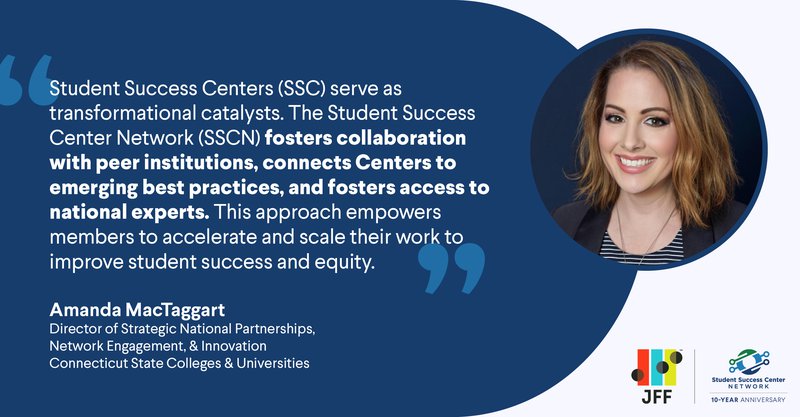Ongoing Impact
The original partners saw Student Success Centers as leaders that centrally coordinated efforts to improve student persistence and completion rates across all of a state’s community colleges. At the time, individual institutions were implementing a wide array of completion improvement strategies in isolated initiatives. As state-level entities, the Centers identified, promoted, and scaled the most effective options. They also created opportunities for schools to connect with one another so they can engage in peer learning and share ideas and resources to accelerate impact. This work continues today.
“Student Success Centers serve as transformational catalysts,” says Amanda MacTaggart, director of strategic national partnerships, network engagement, and innovation at Connecticut State Colleges & Universities. “The Student Success Center Network fosters collaboration with peer institutions, connects Centers to emerging best practices, and fosters access to national experts. This approach empowers members to accelerate and scale their work to improve student success and equity.”
As it completes its first decade of service, the SSCN continues to provide resources and support to state Student Success Centers. That support, in turn, puts the Centers in a position to help community and technical colleges provide learners and workers with opportunities to build in-demand skills and access career pathways that lead to economic advancement, a critical need for people who face barriers to employment and education, including many Black, Latinx, Indigenous learners, and many adult students of all backgrounds.


